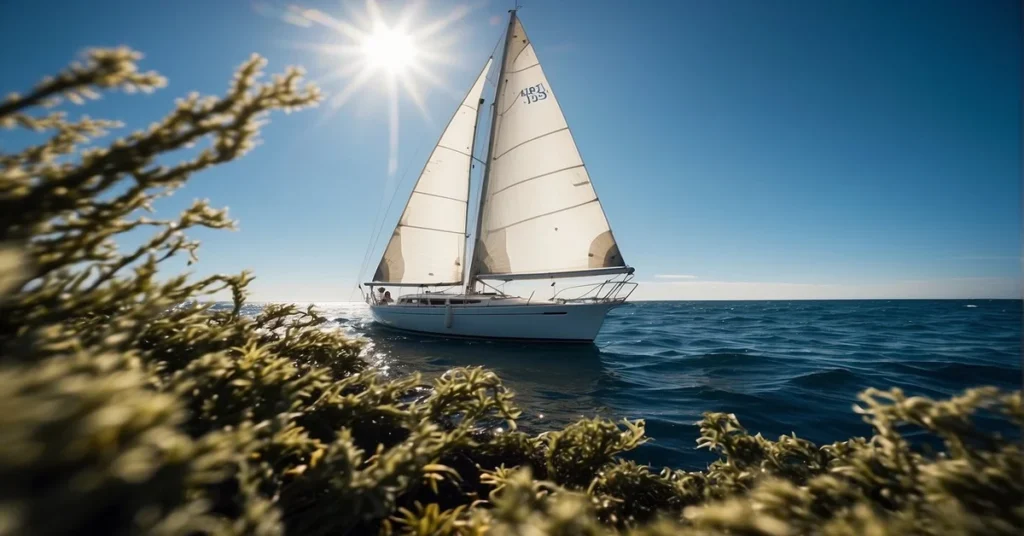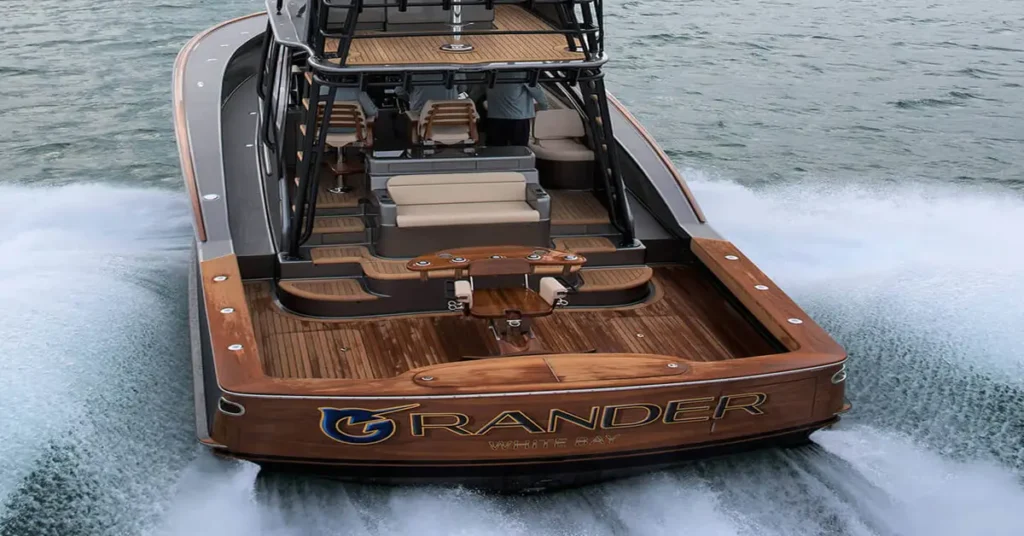Speed boat racing is an adrenaline-charged sport that has attracted thrill-seekers and boat enthusiasts for decades. As we dive into high-speed competition, we’ll explore the various categories of boat racing, the teams that make these races possible, and the undeniable excitement this sport generates.
In the United States, boat racing is overseen by the American Power Boat Association, an organization responsible for sanctioning and regulating power boat races. There are several categories of racing, such as inboard, offshore, modified, stock, and many others, each offering a unique and exhilarating experience for both racers and spectators.
As fans of speed boat racing, we can’t get enough of this sport’s incredible power, speed, and tight competition. So join us as we journey through the fast-paced world of speed boat racing, where dreams are made and records are broken.
History and Evolution of Speed Boat Racing
As enthusiasts of speed boat racing, we have always been fascinated by the origins and development of this thrilling sport. From its humble beginnings to the exhilarating, high-octane competitions it has become today, speed boat racing has a rich history. Let’s dive into the world of speed boat racing and explore its storied past, evolution, and critical historical events.
Origins and Development
It all started in the early 1900s when internal combustion piston engines replaced heavy steam engines and boilers. Many early speed boats were race boats, as they were the most efficient and advanced of their time.
The Hull-based Priestman Brothers created the first speedboat on record in 1888, powered by kerosene and featuring high-tension ignition2. As these boats developed further, the offshore performance boating scene emerged in the mid to late 1950s.
At the heart of the story of speed boat racing lies the Union Internationale Motonautique (UIM), the world governing body responsible for powerboating. The UIM solidified the rules and regulations for various categories of speed boat racing, including offshore racing.
Key Events in Racing History
- Cowes-Torquay-Cowes offshore powerboat race: Often regarded as one of the most challenging and oldest offshore races, the Cowes-Torquay competition marks a significant milestone in powerboat racing.
- Water speed record attempts: The quest for speed has led to numerous attempts to break water speed records. One notable example from the 1930s involved Sir Henry Seagrave’s Miss England II, which reached a speed of 98.76 mph, taking the title from America’s Gar Wood and his Miss America boat.
- Key West: As the sport grew in popularity and international reach, iconic events like the Key West World Championships started attracting participants from all over the globe. This offshore race often takes place in challenging conditions, testing the racers’ skill and endurance.
In conclusion, speed boat racing has gone through an incredible journey as it evolved from small beginnings to major international competitions. As we look back on the sport’s history, we can’t help but be excited about future developments and milestones.
Major Championships and Events

We’ve all heard about the excitement and thrill of speed boat racing. With its heart-pumping adrenaline and fierce competition, it’s no wonder this sport captivates audiences worldwide. Let’s dive into the major championships and events in the world of speed boat racing.
Offshore Racing Competitions
Offshore racing competitions are all about pushing the limits of speed and endurance. The American Power Boat Association (APBA) yearly sanctions various offshore racing events. One of the most renowned events is the Key West Offshore World Championships, which attracts top powerboat racers from around the globe to compete for the “Offshore World Champion.”
Another prominent event is the Race World Offshore (RWO) racing series. RWO hosts various races across the United States, including Clearwater and Marathon, FL. Many of the fastest and biggest boats enter these exciting races.
Here’s a brief overview of some notable offshore racing events:
- Key West Offshore World Championships: An annual three-day Key West, FL event.
- RWO race series: A schedule of races hosted by Race World Offshore throughout the year
- APBA Championship Races: A list of various sanctioned championship races held by the American Power Boat Association.
Powerboat Racing Circuits
Powerboat racing circuits showcase the best in high-speed racing on closed-course tracks. The APBA is actively involved in regulating different types of powerboat racing circuits in the United States. From hydroplanes to tunnel hulls, these inboard and outboard-powered boats deliver breathtaking excitement at every turn.
Some famous championship races and circuits within the powerboat racing domain include:
- APBA Offshore National Championship Series: A point-based championship series featuring high-speed powerboats competing for the national title.
- APBA Outboard Racing: A series of races for various categories of outboard-powered boats, ranging from junior classes to the high-powered Formula 1 outboard.
- Region 9 Bud David-Bill Boyes Time Trials: A time trial event held by the APBA in Region 9, testing not only the speed of the boats but also the skills of their drivers.
In addition to these championship races and circuits, numerous regional and local races happen yearly. Whether you’re a fan or a competitor, powerboat racing offers a wide range of events and activities to satisfy your need for speed.
Racing Teams and Sponsors

As enthusiasts of speed boat racing, we can’t help but be fascinated by the intense competition and camaraderie displayed by the participants. Racing teams play a crucial role in the sport, while sponsors and fans show their unwavering support. In this section, we highlight team dynamics, structure, and the significance of sponsorship and fan support.
Team Dynamics and Structure
In speed boat racing, teams typically consist of:
- Drivers: Skilled racers who expertly pilot the boat and navigate through challenging waters.
- Throttleman: Partners with the driver to control boat speed and ensure optimal performance.
- Crew: Comprising of mechanics, engineers, and support staff, they handle maintenance, repairs, and logistics.
Synchronization between team members is essential for success. Communication and trust amongst the team, especially between the driver and throttle man, are paramount to achieving victory on the racecourse. The crew’s hard work and technical expertise contribute significantly to a team’s performance.
Sponsorship and Support
Sponsorship plays a vital role in speed boat racing, providing the necessary financial resources and equipment for the teams to be competitive. Corporate sponsors invest in racing teams because it promotes their brand, generates business connections, and helps create a loyal following.
Some notable sports sponsorships include Monster Energy’s title sponsorship of M CON Racing Team and Mercury Racing’s Formula One Powerboat Championship series sponsorship.
Fans are the soul of speed boat racing, creating a supportive and energetic atmosphere during races. They accumulate merchandise from their favorite teams, such as apparel and accessories. In some cases, fans may even purchase Xinsurance policies for their powerboats to support their love for the sport.
In conclusion, the racing teams, sponsors, and fans form a symbiotic relationship that collectively drives the success and excitement of speedboat racing. The passion and commitment displayed by everyone involved help fuel the growth and popularity of this thrilling aquatic motorsport.
Boats and Technology

As fans of speed boat racing, we can’t help but marvel at the innovations and technology behind these magnificent machines’ fast-paced, adrenaline-filled world. From catamarans to hydroplanes, and cutting-edge engine advancements, let’s dive into the exciting realm of boats and technology in powerboat racing.
Catamarans and Hydroplanes
Two popular types of racing boats are catamarans and hydroplanes. Catamarans are boats with two parallel hulls, while hydroplanes are designed with a unique hull shape that allows them to lift out of the water at high speeds, dramatically reducing drag.
Some well-known brands within the powerboat racing sphere include MTI and Fountain, both of which offer high-performance speed boats that push the boundaries of speed and engineering.
| Feature | Catamaran | Hydroplane |
| Hull | Two parallel hulls with | Unique shape that lifts out of water |
| Stability | More stable at high speeds | Less stable, but faster |
| Performance | Excellent in rough waters | Best suited for calm waters |
| Popularity | More common in offshore racing | Popular in unlimited-class powerboat racing |
For more information about Catamaran Speed Boat Trips, please check our article here 3 Incredible Catamaran Speed Boat Trips – Electrify Your Vacation in 2024.
Engine Performance and Innovations
The heart of any racing boat is its engine. Over the years, we’ve seen incredible performance innovations, ranging from traditional two-stroke engines to more advanced and fuel-efficient inboard engines. One such example is the supercharged V-8 engine found in the 1,000-HP race boat that hits 110 MPH surprisingly smoothly.
Manufacturers like Mercury are continually pushing the limits of engine technology, developing power plants with increased horsepower, reduced weight, and improved fuel efficiency. One recent innovation in powerboat racing is the M37R, an electric-powered catamaran designed for high-speed racing with a target speed of 50 mph.
In conclusion, we’ve explored the incredible world of boats and technology in speed boat racing, focusing on the thrilling catamarans and hydroplanes and the impressive engine technology that drives these fantastic machines. As powerboat racing continues to evolve, we’re eager to see what the future holds for performance, speed, and innovation.
Safety and Regulations

We all know that speedboat racing can be an exhilarating and adrenaline-pumping sport. In such a fast-paced environment, it’s of utmost importance to ensure the safety of racers and adhere to regulations. This section will discuss safety measures for racers and the regulatory bodies overseeing speedboat racing in the United States.
Safety Measures for Racers
Regarding speedboat racing, safety should always be a top priority. Racers should consider the following measures for their protection:
- Personal Protective Equipment (PPE): Racers must wear appropriate PPE, including life jackets and helmets, to reduce the risk of injury during an accident.
- Emergency Supplies: All race boats should be equipped with essential emergency supplies, such as fire extinguishers, first aid kits, and distress signals.
- Boat Inspection: Before participating in any race, ensure your boat is thoroughly inspected and maintained according to the American Power Boat Association (APBA) guidelines.
- Training and Licensing: Racers must undergo proper training and obtain the necessary licenses to meet the safety standards set by regulatory bodies.
Regulatory Bodies
There are several regulatory bodies responsible for overseeing speed boat racing in the United States. Some of the prominent organizations include:
- American Power Boat Association (APBA): APBA is the US’s national governing body for powerboat racing. It sets the rules and regulations for various racing categories while enforcing safety standards.
- North American Model Boat Association (NAMBA): NAMBA is responsible for promoting, organizing, and regulating the sport of model powerboat racing in North America. Similar to the APBA, it is also involved in setting rules and ensuring compliance with safety requirements.
- Race World Offshore (RWO): RWO is a premier organization that hosts world-class offshore powerboat races, fostering the growth and popularity of the sport in the US. They ensure compliance with the highest safety standards and work to maintain a level playing field for all participants.
Adhering to safety measures and being aware of the regulations will improve the race experience and ensure the well-being of all participants in the thrilling world of speedboat racing.
Global Influence and Cultural Impact

As speed boat racing enthusiasts, we are excited to share the global influence of this thrilling sport and its cultural impact on various regions. This section will delve into the spread of powerboat racing in diverse areas and its effect on lifestyle and media.
Powerboat Racing in Diverse Regions
Long Beach, CA: This city has been hosting spectacular speedboat racing events for years, making it a hotspot for powerboat racers and fans alike. The annual competition features classes like SST 45 and SST 200, attracting competitors across the United States.
India: Surprisingly, the immense popularity of speed boat racing has reached the Indian shores as well. The Nehru Trophy Boat Race is a prime example of India’s growing interest in the sport, where traditional snake boats are converted into powerboats to compete against each other.
Asia: Asia, too, has embraced this adrenaline-pumping sport. Events like the UIM XCAT World Championship have garnered massive attention, showcasing the region’s commitment to nurturing powerboat racing culture.
Impact on Lifestyle and Media
- Lifestyle: Apart from the thrill and competition, speed boat racing has influenced lifestyles by fostering a sense of camaraderie among the powerboat racers. As a result, many enthusiasts have adopted a boat racing-inspired lifestyle, revamping their fitness routines and dedicating considerable time to practice sessions.
- Media Coverage: The popularity and widespread appeal of speed boat racing have led to extensive media coverage. Newspapers, magazines, and sports channels have published numerous photos and videos of thrilling races, with some even hosting dedicated segments on famous offshore world champions to give viewers a glimpse into the lives of these talented athletes.
By examining the diverse regions involved in powerboat racing, the sport’s influence on lifestyle, and the media’s role in amplifying its excitement, we can genuinely appreciate the global impact of speedboat racing.
Our Thoughts on Speed Boat Racing

As passionate boat owners and fans, we love the thrill and excitement of speed boat racing. There’s nothing like watching impressive boats zoom across the water at incredible speeds, pushing engineering to its limits. It’s a sport that taps into our sense of adventure.
FAQ – Speed Boat Racing

As fans of speed boat racing, we know many burning questions surround this thrilling sport. In this section, we’ve compiled answers to some of the most frequently asked questions to quench your curiosity.
How fast is the F1 speed boat?
F1 (Formula 1) speed boats are built for speed and agility on the water. These incredible racing machines can reach top speeds of around 140 mph (225 km/h) in ideal conditions.
With their lightweight, aerodynamic design, F1 boats are crafted explicitly for closed-course racing on lakes, rivers, and other sheltered water bodies. Their powerful engines and hydroplane hulls allow these boats to skim the water’s surface quickly and precisely.
How fast is a speed boat race?
The speed of a speed boat race can vary depending on the type of boat, the racing conditions, and the course layout. In general, recreational speed boats may reach speeds of 30 to 60 miles per hour.
However, high-performance boats and racing boats like those used in F1 competitions can achieve 100 mph or more speeds. The average speed boat race will usually see competitors reaching speeds between 50 and 60 miles per hour, with some boats potentially exceeding 100 mph.
How fast do boat races go?
There are many different types of boat races, each with its own set of unique speeds:
F1 speed boats: As mentioned earlier, they reach top speeds of around 140 mph (225 km/h).
Offshore powerboat racing: In these races, boats can reach impressive speeds over 200 mph.
Drag boat racing: These high-octane races feature boats sprinting in straight lines and can see speeds exceeding 250 mph (400 km/h).
Sailboat racing: Not all boat races are about power and speed. Participants typically reach speeds around 8 to 20 mph in sailboat races, relying on wind conditions and their sailing prowess.
In conclusion, We think that the speed of boat races can vary greatly depending on the specific type of race and the vessels involved. However, the incredible skill, precision, and passion demonstrated by the competitors in these exciting races remain consistent.
What are your thoughts on Speed boat racing? Let us know in the comments!



